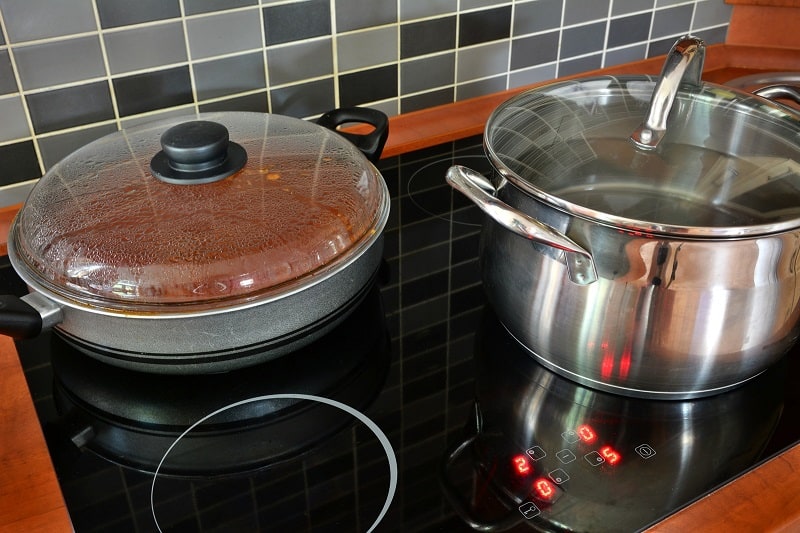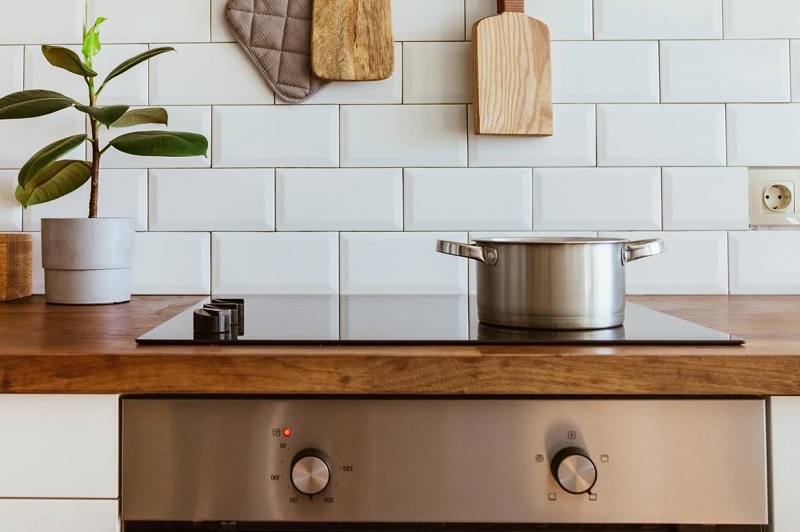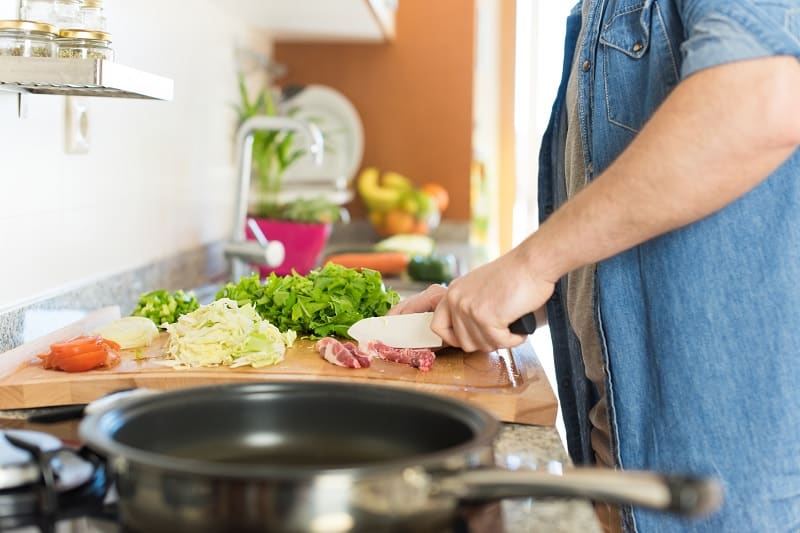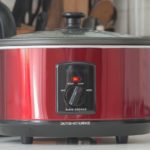The most energy efficient hob type is an induction hob.
The power usage of different hob ring types is very similar:
- Average induction hob ring power usage (per hour): 1.95 kW
- Average gas hob ring power usage (per hour): 1.95 kW
- Average ceramic hob ring power usage (per hour): 1.65 kW
However, because induction heats pans in a much more efficient way, it is much quicker to cook with, and will therefore use less energy to produce the same results.
As an example, the average induction hob will use about 0.117 kWh to boil a pan of water, while a gas hob would use 0.269 kWh and a ceramic hob would use 0.203 kWh.
In this article, we’ll explore induction hobs and the reasons why they are so energy efficient. We will also have a chat about the other great things that induction hobs feature too.
So, if you are considering a new hob for your home and want to get the most energy efficient one you can, induction hobs should be your hob of choice.
What Makes Induction Hobs So Energy Efficient?

Induction hobs are more energy efficient than other hob types because there is very little wasted energy. They heat pans directly using induction heating, which involves creating a magnetic field between the hob and the pan.
In contrast, conventional hobs such as gas and electric plate hobs heat pans indirectly, which means a lot of energy is wasted. This explains why conventional hobs feel hot if you put your hands near them, as the wasted energy is escaping into the air rather than heating the pan.
A conventional hob (an old-school gas or electric plate hob), has quite a bit of waste. In fact, about 50% of the energy is wasted. This is because the heat is dissipating around the pot or pan as you are heating it. This means wasted energy, and that costs you money and is bad for the environment.
An induction hob creates a magnetic field. When electricity is passed through the coil (which is underneath the glass), this creates electromagnetic energy. This passes directly into the pan, creating a current that produces heat.
So, your induction hob isn’t actually creating the heat as such. It is the pan and coil together creating the heat. Your hob is just creating a magnetic field, really.
Are Induction Hobs Cheaper to Run Than Gas?
Since induction is more energy efficient than gas, you might assume it would also be cheaper.
However, things aren’t that straightforward, since gas is cheaper than electricity.
During the current energy price cap period from 1 April to 30 June 2025, the average energy costs per kWh in the UK are:
- 27.03p/kWh for electricity
- 6.99p/kWh for gas
Since gas is so much cheaper, this means that gas hobs are actually cheaper to run than induction hobs, despite being less efficient.
According to our calculations, the cost of running the average induction hob ring for one hour would be 52.7p, whereas a gas hob ring would cost just 13.6p to run for an hour.
However, since induction heats pans much more quickly than gas, you wouldn’t need to use it for as long compared to a gas hob, so the cost difference would’t be so great.
Induction hobs are cheaper to run than other electric hobs, but aren’t as cheap as gas hobs since gas prices are so much lower per kWh.
Benefits of Induction Hobs
Induction hobs are incredibly energy efficient and will help you lower your carbon footprint. However, there are loads of other benefits to an induction hob too.
Safety
For starters, these hobs are extremely safe. Only the pan generates heat. Also, because of the way an induction hob works, if a pan isn’t in contact with the surface, the hob shuts that ring off. It will also shut the element off if a pan is too small for that element.
Easy to clean
Also, induction hobs are very easy to clean. As the surface of an induction hob doesn’t heat up anywhere near the amount of any other hob type, any food that spills on an induction hob won’t burn.

Other Energy-Saving Cooking Appliances
Ovens and hobs are the main two cooking appliances found in all UK homes. However, there are other smaller cooking units you might want to include in your energy efficient kitchen. For example, microwaves, slow cookers, and air fryers.
A microwave is the most energy-efficient cooking appliance found in the kitchen, topping both an oven and a hob in terms of energy usage.
They cook food extremely quicky and so don’t use as much energy. In fact, they are up to 80% more efficient than a conventional oven!
However, while microwaves are an energy-efficient alternative for reheating food or cooking vegetables, they’re not suitable for cooking everything.
Thankfully, slow cookers and air fryers are a great oven-alternative to cook the foods that microwaves can’t.
The average slow cooker can use used on the highest energy setting for eight hours and only use 1.68 kWh of energy. This is because these appliances use a low current and trap heat inside the pot to facilitate cooking.
Air fryers don’t need any preheating and cook most things within 5 minutes. Therefore, they are also an efficient way of cooking!

How to Cook Using Less Energy & Electricity
Fitting your kitchen out with an induction hob and convection oven is a great step to a more eco-friendly home.
Cooking using your cooktop instead of the oven is also beneficial. And using a microwave, slow cooker, and air fryer in place of your oven further helps to cut energy usage, reduce your household bills, and better our planet.
However, appliances are only half of the equation! Here are some other considerations for energy-efficient cooking you can use to keep costs down.
1. Cook food in bulk
A great way to reduce your energy usage is to cook food in bulk. For example, cooking a lot of food at once in your oven means you can use more of the energy to cook food and less to heat empty oven space.
You can then freeze or refrigerate leftovers and reheat them using your microwave – the most energy-efficient appliance of them all.
2. Choose the right cookware
Choosing the right cookware can also impact your energy usage. A big consideration is the size of the pots and pans you use.
You should always use cookware that is the right size for the food you’re cooking.
Otherwise, additional energy has to be used to heat up a larger than necessary pan and the excess water within in.
Material is important as well. When choosing oven dishes, glass and ceramic cookware is best. Both of these materials are slower to heat than metal but hold heat for a long time, helping food to cook more quickly.
On the other hand, copper is a great option for pots and pans. It heats up more quickly than metals such as stainless steel, reducing cooking time and improving efficiency.
Whenever you cook on the stove, always ensure you put a lid on the pot as well. By covering your pots and pans, you’re helping to trap the heat inside the pan.
This is similar to how a slow cooker works and ensures more of the heat generated goes into cooking.
3. Use appliances the right way
Using the right appliances for cooking is important, but using your appliances the right way is also crucial. For example:
- Always use a burner ring that is the same size of the pan you’re using
- Turn down the heat of the hob to a simmer once the liquid has reached boiling point
- Never open the oven door during cooking as this lets heat escape
- Always use flat-bottomed pans with an electric hob to help heat the pan more quickly
- Keep your appliances clean so no heat is absorbed by debris and old food
- Turn an electric oven off 10 minutes before the timer to complete cooking without using additional energy
Conclusion
If you want the most energy efficient hob on the market, induction has to be your choice. They aren’t cheap, but they are fantastic.
The amazing energy savings from an induction hob is just one of the many benefits to this hob type. Please explore our website further for loads more information about hobs, ovens and all kinds of cookware.

Scott is a writer and a passionate home chef. His passion for cooking began when he was 10 years old. Scott has been writing professionally for over five years now and loves to combine his passion for cooking with his day job.


